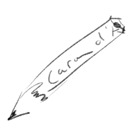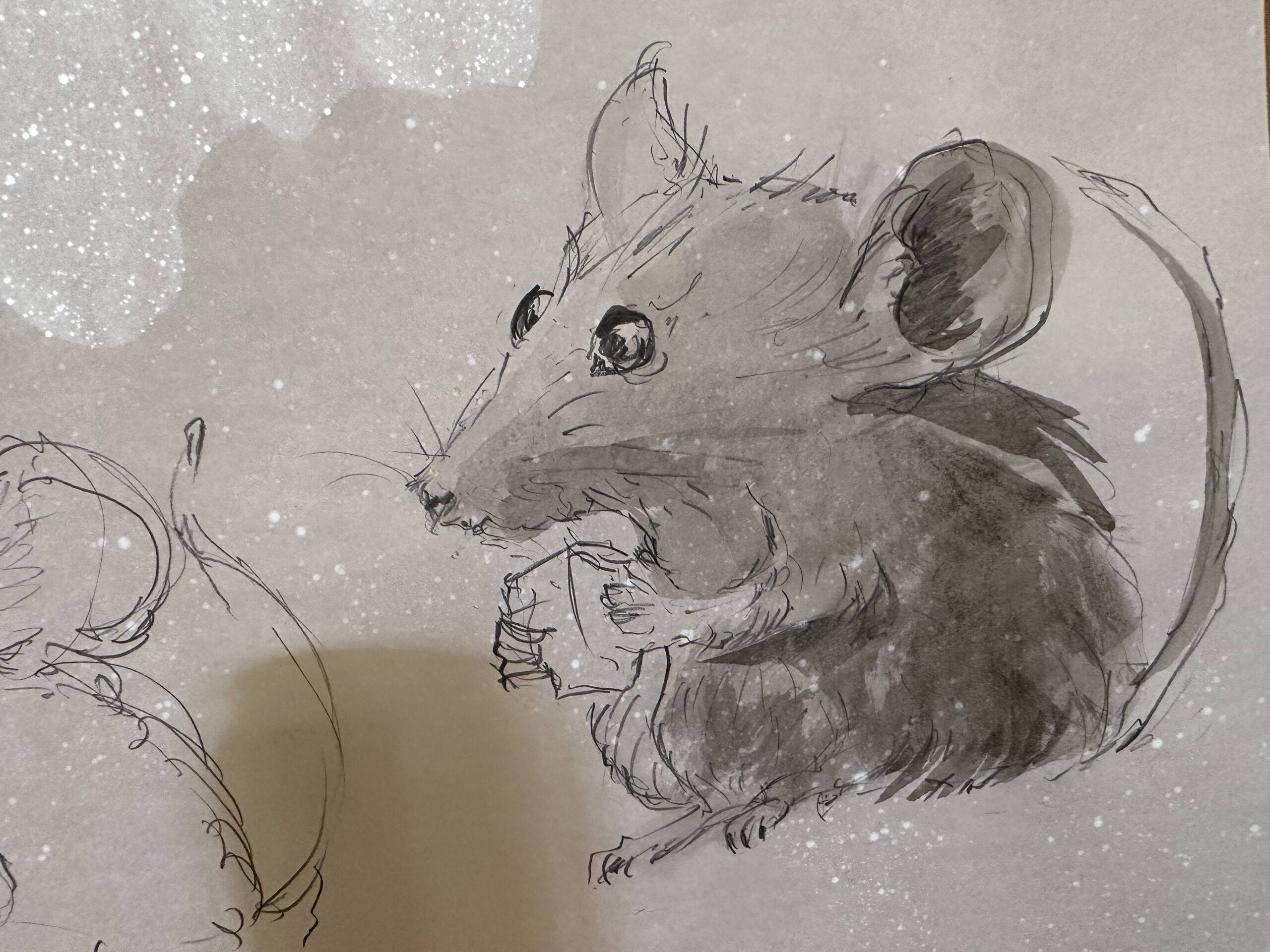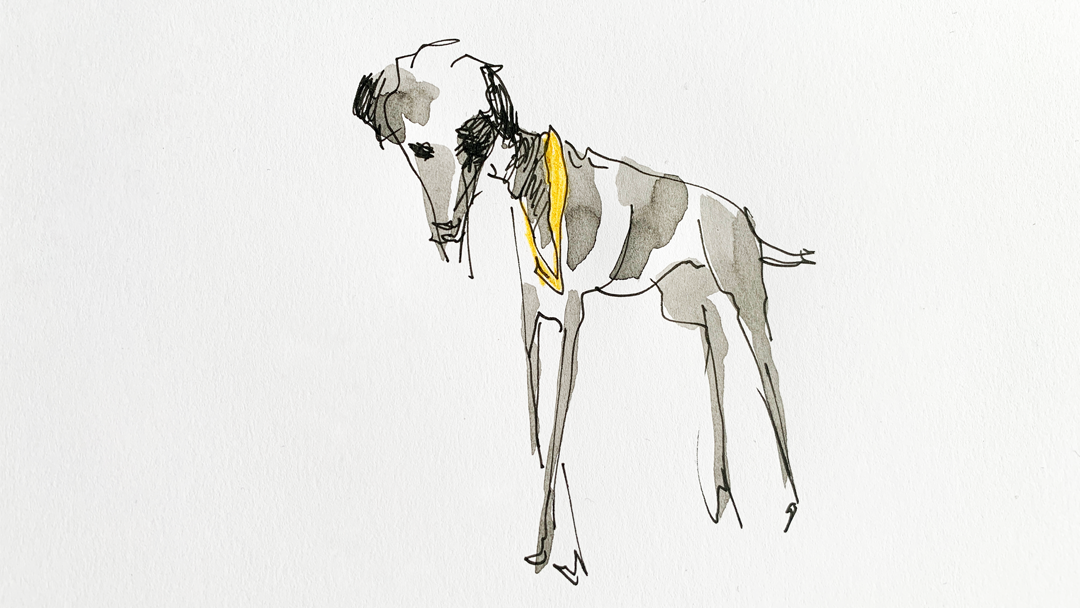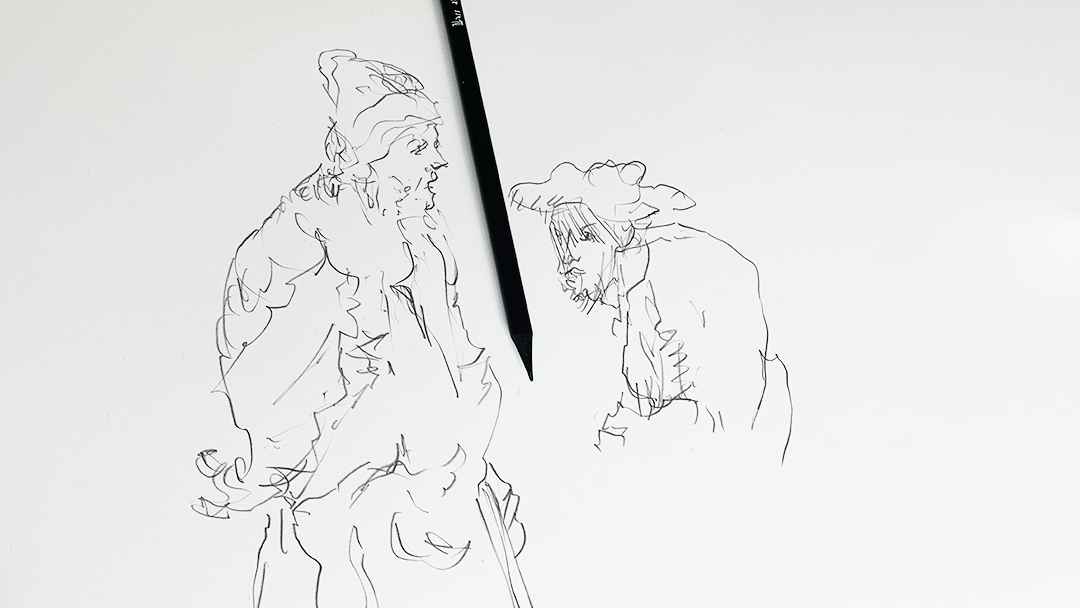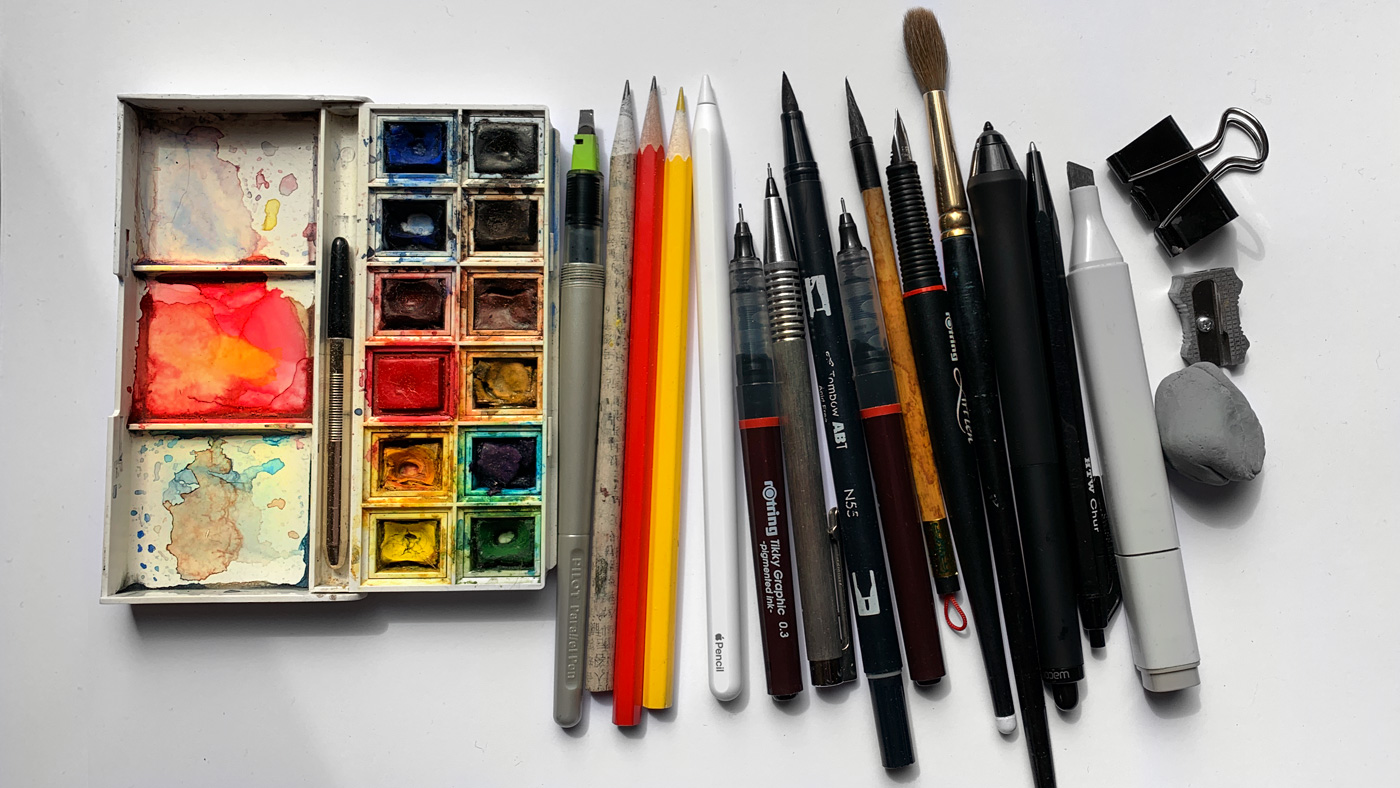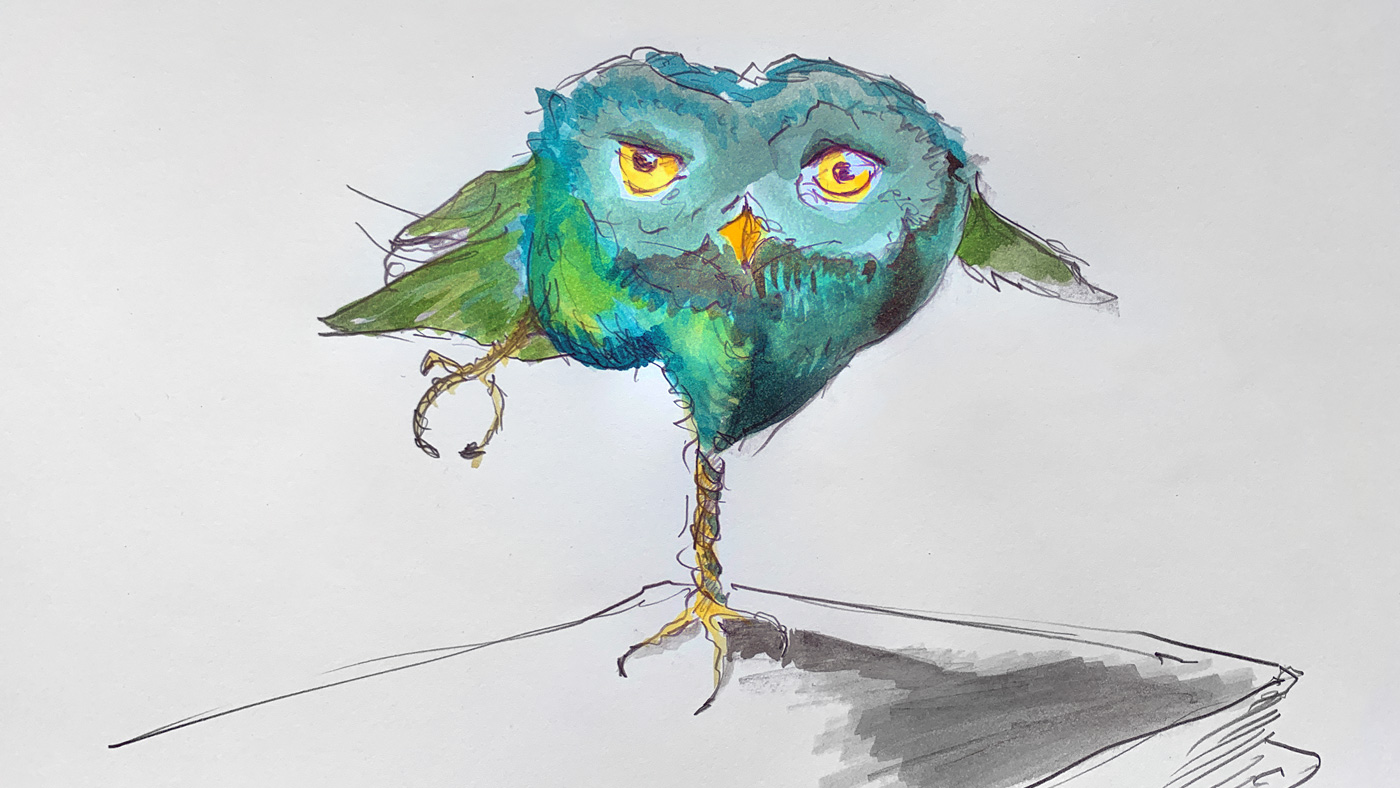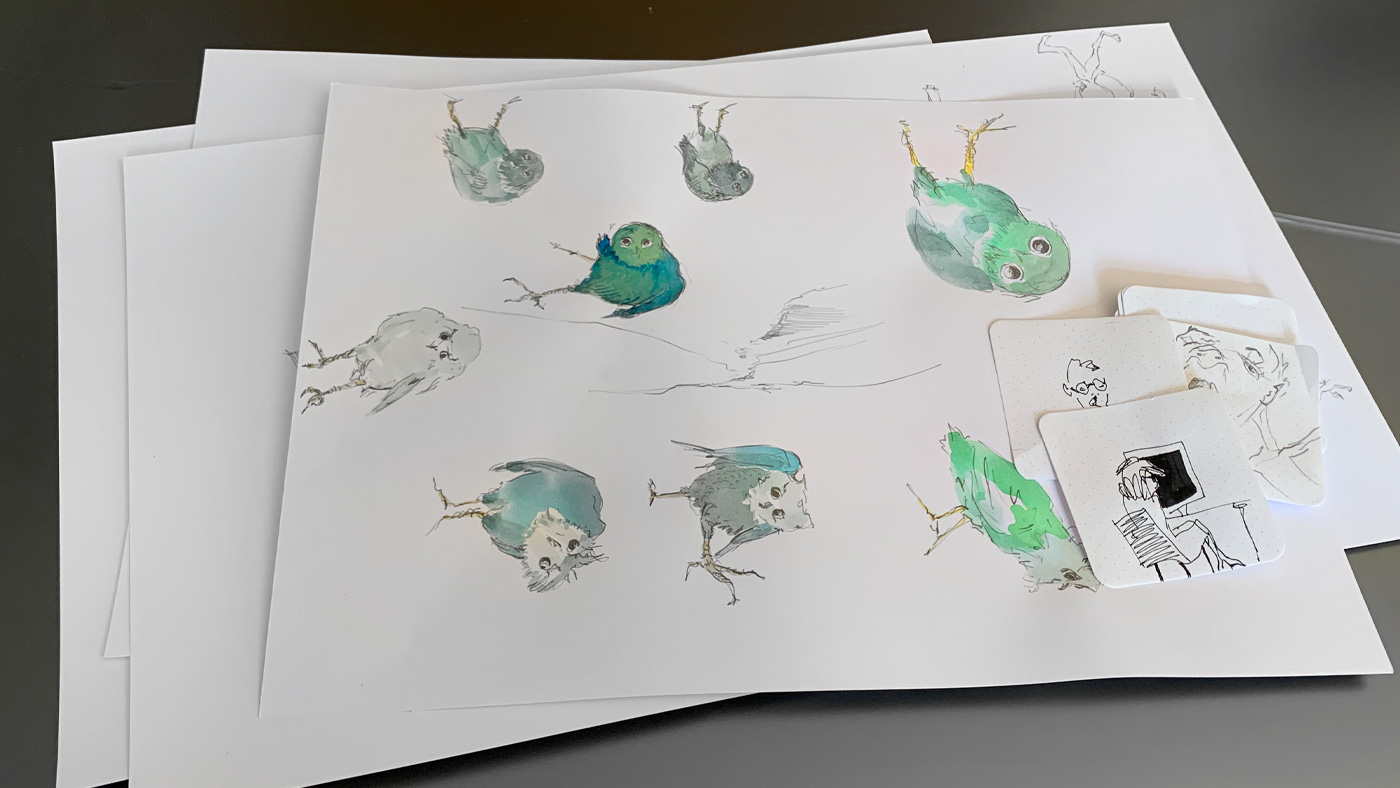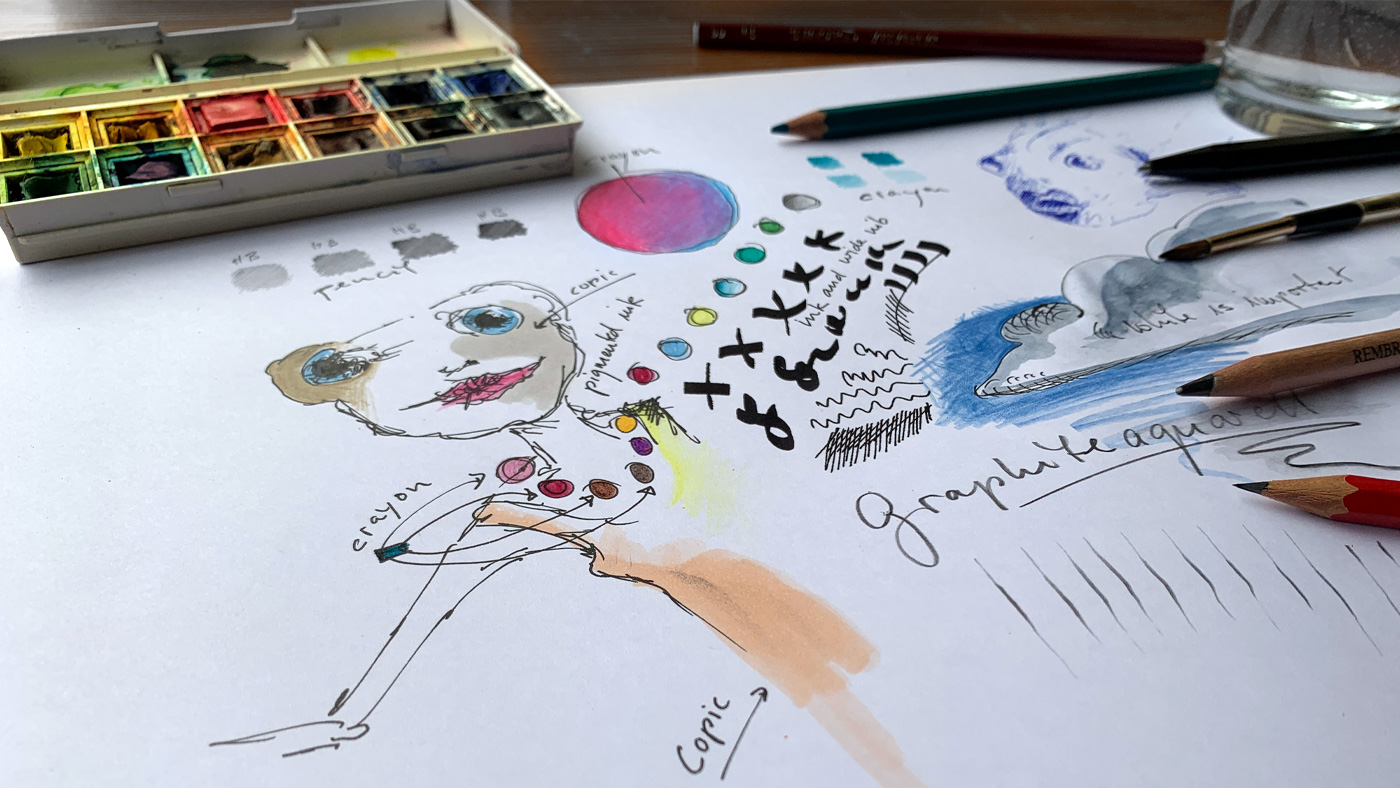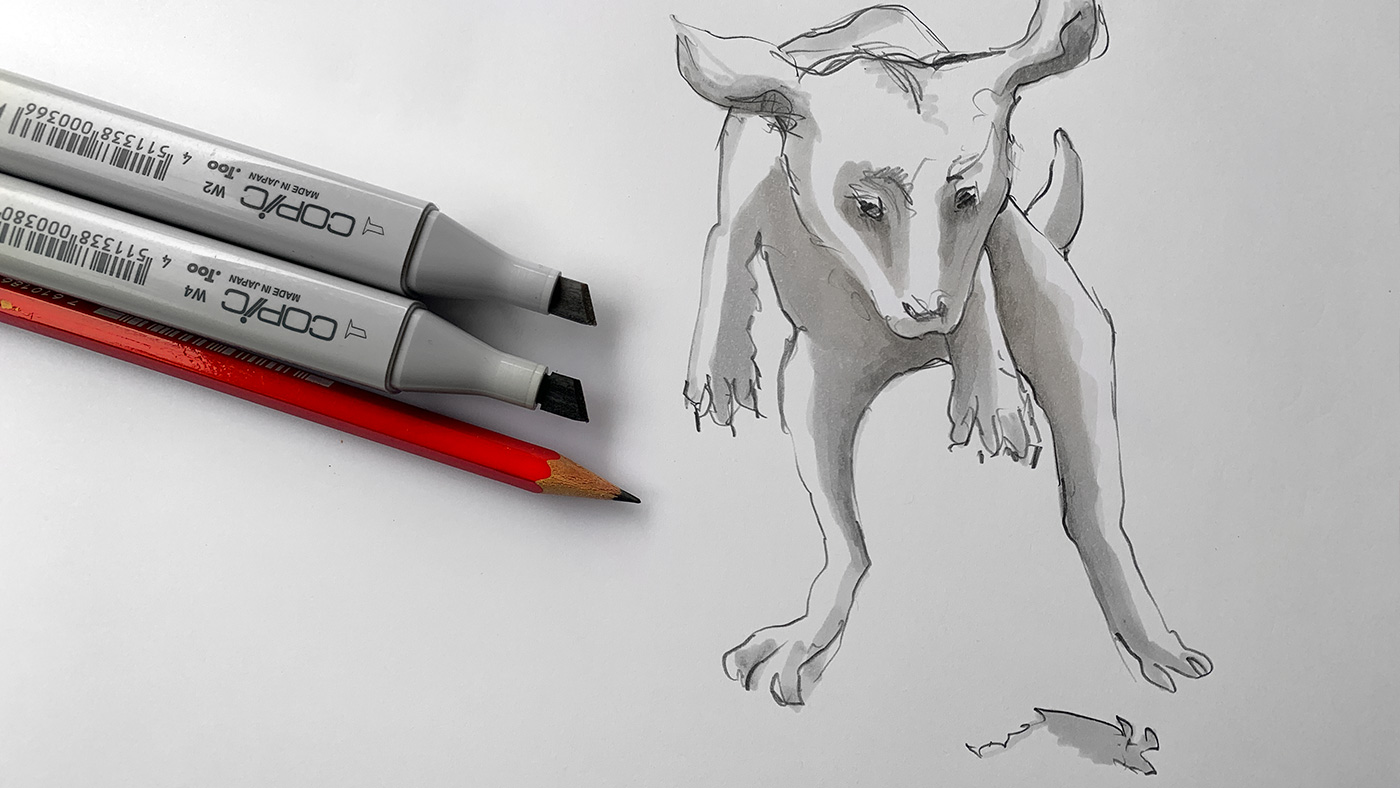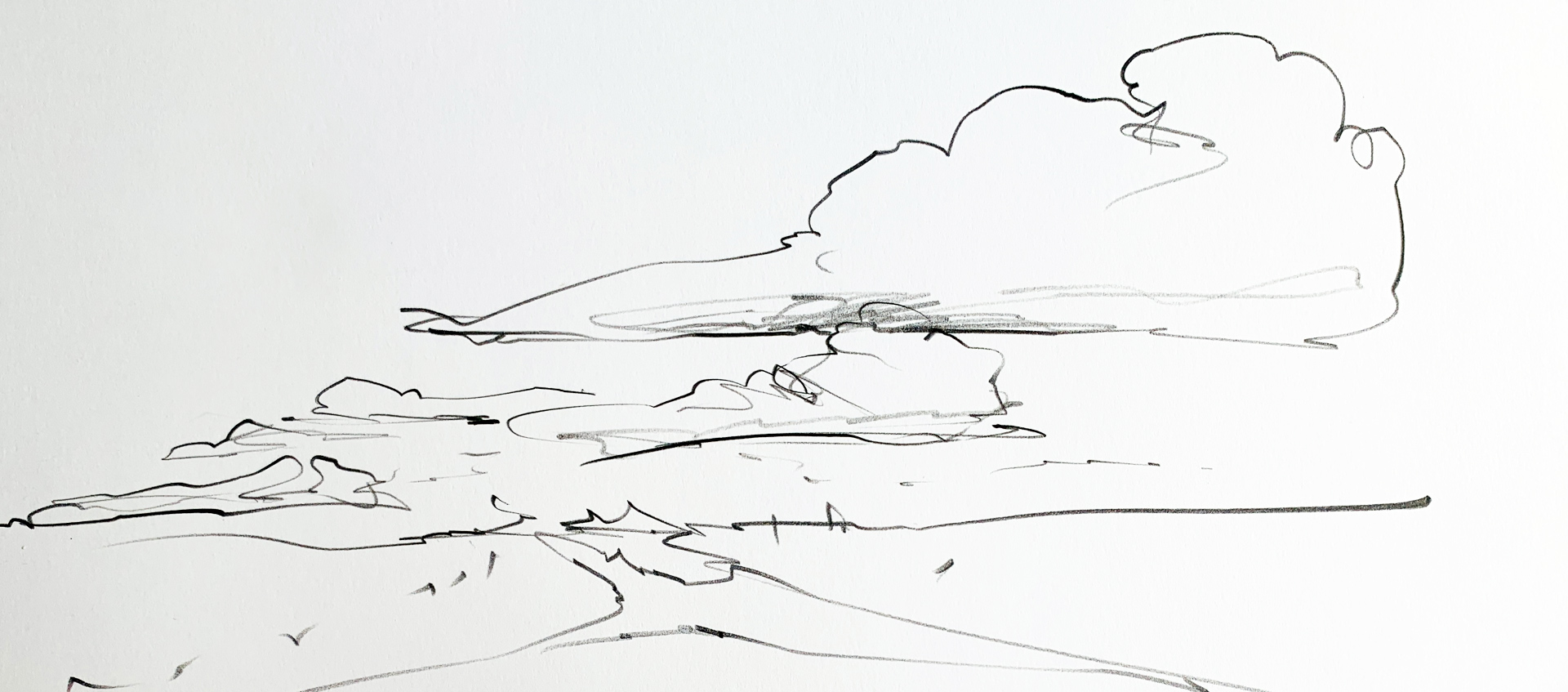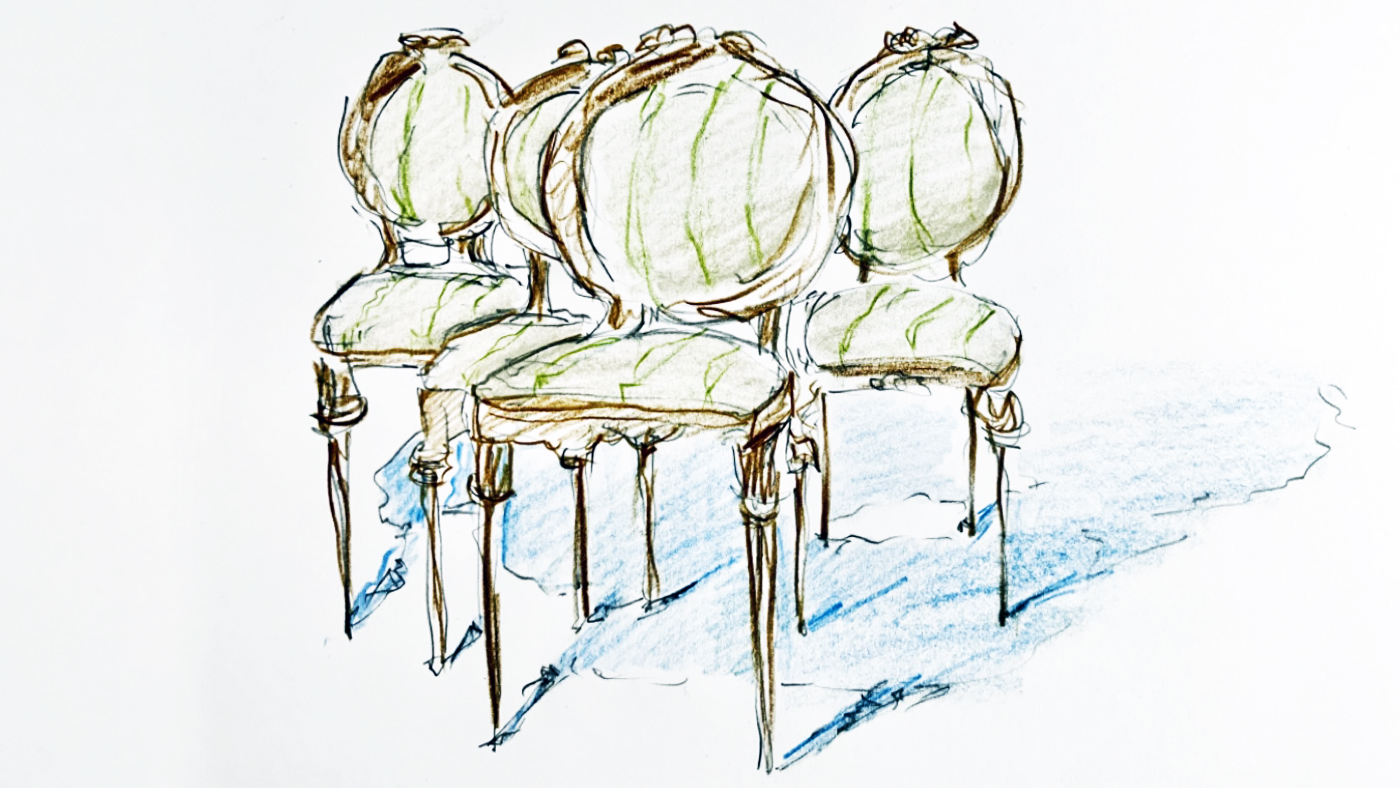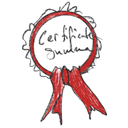An easy way to learn sketching
Everything you need to know about sketching and learn to sketch by practising for a week.
„Sketch&Draw illustrates a fascinating analogy in image generation wit AI, with ‚visual noise‘ playing a pivotal role. In Sketch&Draw, techniques like fluttering lines, line bundles, and crossing lines create a visual ’noise‘. These elements are not merely aesthetic choices; they serve to generate depth and complexity in the image and stimulate the viewer’s perception. Similarly AI image generation uses algorithmic ’noise‘ to develop detailed images from simple prompts. This noise, whether through the irregular line work in Sketch&Draw or the algorithmic variations in Stable Diffusion etc., acts as a catalyst for creativity and complexity in image generation. Both processes leverage this unpredictability to create unique, expressive works that reflect both human intuition and algorithmic intelligence.“
The ten rules emphasize the specific drawing techniques of Sketch&Draw and draws parallels to the methods in AI-driven image generation, focusing on the role of ‚visual noise‘ in both processes.

What does your sketch reveal about your thinking process?
With the custom Sketch&Draw ChatGPT, you can reflect on your drawings and refine them.
Direct link to ChatGPT
Course overview
10 rules for sketching and about 70 exercises to practice
What does a great sketcher like Rembrandt van Rijn or Honoré Daumier do with their lines? What can we learn from a classical artists sketching lines to improve our sketching practice?
This is how the sketching method of Sketch&Draw approaches the challenges of teaching how to draw.
„Sketch and Draw“ is a method to learn sketching, reduced to the essentials. The theory is based on a few drawing and visual rules that form the basis for the representation of all facts.
These are the ten rules for sketching
Rule 1 | Let the line flutter
Fluttering lines make it possible to bring in one self.
Rule 2 | Work with line bundles
Dash bundles allow spontaneity.
Rule 3 | Work with crossing lines
Intersecting lines help to visually narrow down the right line.
Rule 4 | Work with open lines
Open lines give the object space to breathe.
Rule 5 | Highlight the line
Accentuated lines lead the eye of the recipient.
Rule 6 | Associate lines
Associated lines indicate the volume of things.
Rule 7 | Perspective
Prolonged lines at the corners emphathasize directions.
Rule 8 | Measuring
Proportions should be on the right place. Directions and lengths must be checked.
Rule 9 | Set five shades
Light and shadow create atmosphere.
Rule 10 | Construct cast shadow
Cast shadows let things appear real.
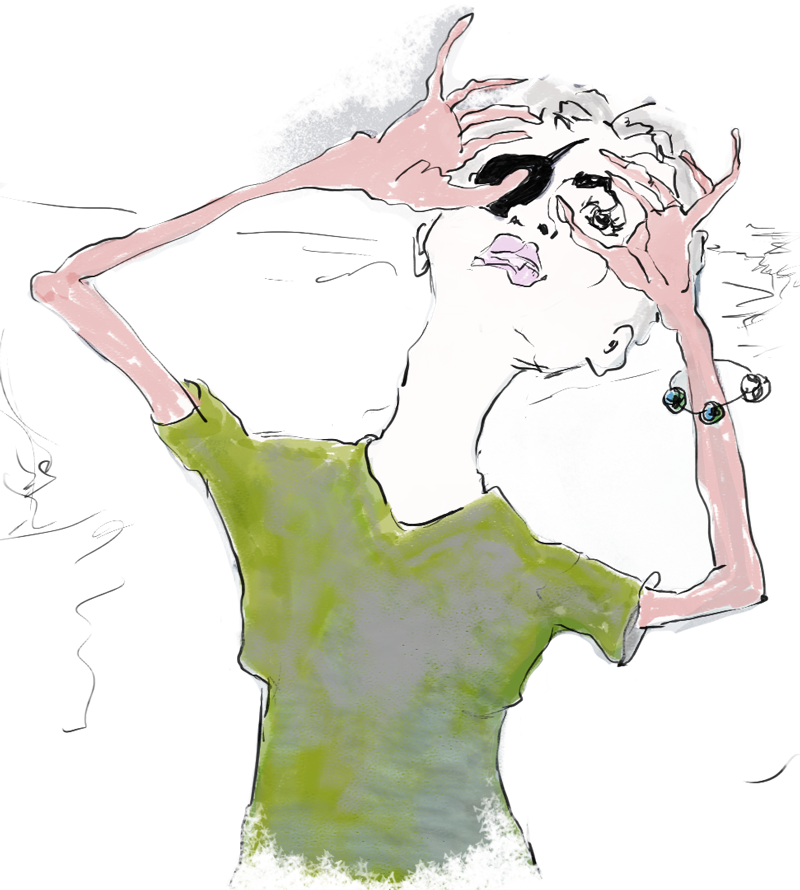
easy as 1… 2… 3…
During the course, you will be lead through about 80 exercises. In video tutorials, you can observe the impacts and get very close to the pencil tip and observe what is needed to achieve the best results.
You can solve all exercises by yourself and get advice from your peers in this course. We are sure, your sketching skills will soon improve.
Tanja Hess will be your teacher.
Get an impression of what the course material looks like and scroll through the gallery beneath.
What does your sketch reveal about your thinking process?
With the custom Sketch&Draw ChatGPT, you can reflect on your drawings and refine them — guided by the 10 key principles of the Sketch&Draw method. Whether it’s fluttering lines, associative shapes, or highlighted contours: the AI helps you see what drawing techniques you’re using — and offers professional feedback on your line quality, expression, and the visual story you’re telling.
Key Features
• Analyse linework, composition, and rhythm
• Get feedback on visual “noise” by fluttering lines and searching gestures, and narrative clarity
• Use the insights to develop your drawing series or personal style
• Ideal for students in design, illustration, art, and visual communication

Free trial
Try one lesson and decide if you want to do the whole course. Click for the free trial ...
Certificate
If you want to achieve a certificate that proves your sketching skills, get all your information here ...

